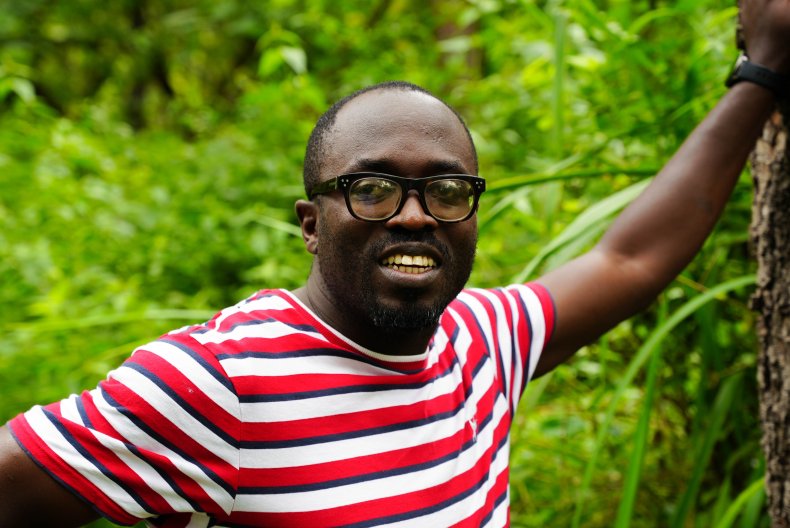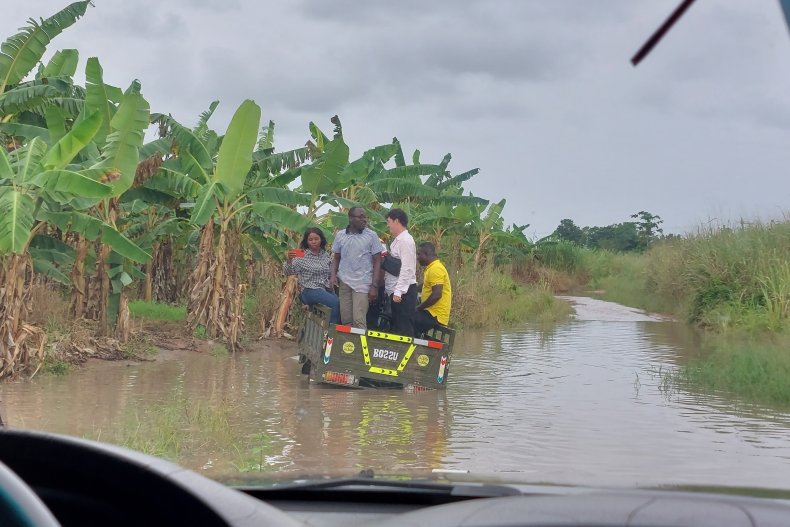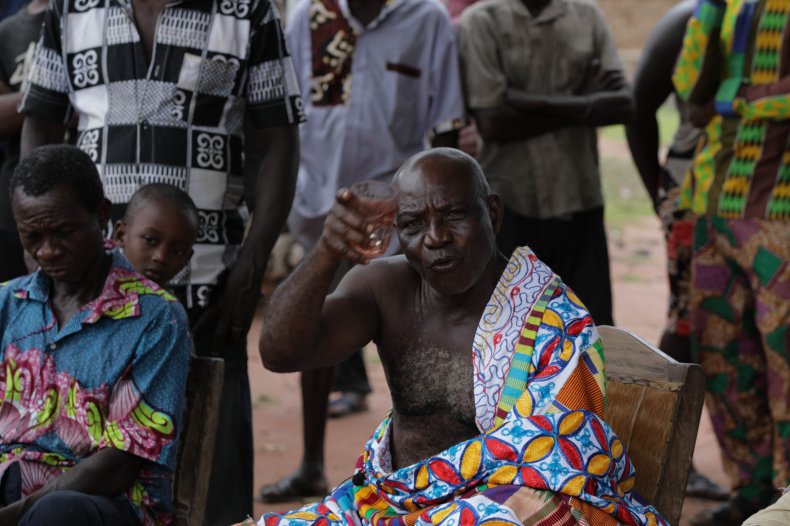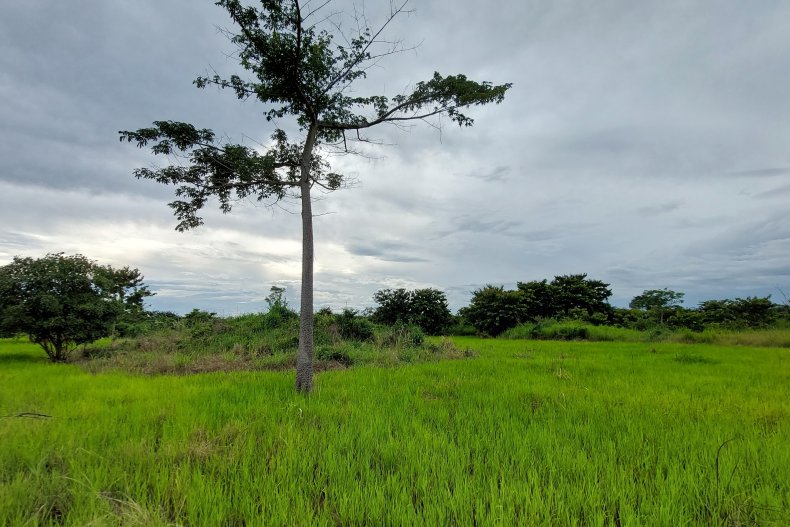How NFTs Could Save the Planet
A project in Ghana hopes to plant in excess of 240,000 trees on 200 hectares of jungle in an effort to create a three-tiered canopy of forestry that will generate funding from the carbon in the atmosphere it captures.
Ecomint, the U.K.-based company spearheading the venture, wants to harness the power of free-market capitalism to create an economically viable environmental project that ultimately funds itself.
This isn’t a new idea, but the novelty of its Angry Teenagers project is that the initial investment needed to plant the trees will come from selling non-fungible tokens (NFTs)—an unregulated and often risky crypto investment.
NFTs have been a fad among millennials in recent years, and could be considered the modern equivalent of collecting trading cards. They represent a provably unique bit of code, which means the holder knows that it can’t be replicated and therefore stolen. To create some tangibility, NFTs are represented with supposedly unique artworks (though a picture is a lot easier to copy than encrypted code).
Ecomint
Like collectibles, their value comes from their uniqueness—if someone else wants it, they have to pay what the seller wants for it—but at the end of the day, they are just code, and this intangibility makes for a very volatile market, one that crashed last year, culminating in the bankruptcy of crypto exchange FTX in November.
So it would be understandable to hold some skepticism toward the idea of NFTs being used as a stable investment stream for a project that is estimated to require about $1 million.
“Essentially, the crypto market evaporated,” said Ben Whately, co-founder and CEO of Ecomint. “With the FTX move, there were no more sales from there. So what we did was move to selling to companies and selling entirely credit cards so people don’t have to interact with owning cryptocurrency in any way.”
The company’s model attempts to make the investment more accountable than other crypto assets. Their NFTs will be assigned to a specific square of land in Ghana, and the money from it used to plant trees on that land. Whately clarified that the money will go into an overall pot for the entire project, but investors will receive progress updates on their patch.
Further funds can be unlocked only when the investor agrees that project milestones have been reached through satellite and on-the-ground images. When the forest starts producing carbon credits, investors will be able to decide what projects those returns are funneled into.
But are the NFTs a necessary part of this, or just a gimmick to get young investors excited? Could the same be done without them?

Aleks Phillips/Newsweek
“On the most basic level, it’s not [needed] really,” Whately responds. But he argues that the Angry Teenager artwork aims to “make doing the right thing for the climate cool and edgy, and exciting and fun.”
He added that the direct investment in a specific plot for people “who give a s**t, that’s enough. But the vast majority of the public are at this point where green stuff kind of bores them, and green branding, pictures of trees—it’s like, ‘oh God, you hippy bores. I just don’t want to know anything about it.’ It just switches people off.”
Each patch of land costs about $200 to redevelop, Whately said, which will end up planting around 46 trees. So far, Ecomint has raised $15,000 to 20,000—less than the “pipeline of buyers” willing to invest the first $100,000 in August, but enough to plant the first 3 hectares, and it has found that small companies are making up 75 percent of interest.

Synd Forest Restoration Project
“Big companies, like BrewDog, they can go out and buy a big chunk of land in Scotland and plant trees on it,” he said. “But if you’re a small company that still cares about climate change[…]it’s a lot of money.”
The man in charge of actually planting the trees is Solomon Yamoah, a teacher from Ghana’s capital, Accra, and his group of youth volunteers.
“Globally, people see or feel how disaster devastates people,” he told me, referencing how the coronavirus pandemic made even those in the most developed of economies “extremely vulnerable.” He cites a local saying that “we don’t inherit the land, but we borrow it for our future generations,” adding, “We have to be conscious to put it in a much better state than we came to meet it.”

Aleks Phillips/Newsweek
Yamoah and his team have an unquestionable dedication to the project. Anyone willing to drive four hours to a town from Accra, to then drive 45 minutes to a village to get into the back of a bike-powered truck to then drive another hour down a mud track to another village of 650 people, to get permission from the local chief to drive another 45 minutes into the Ghanaian jungle, has some serious commitment. Trust me: I was right alongside them when I visited in August.
But it is all worth it to create a “paradise,” Yamoah said. Land clearance has begun and saplings are in a tree nursery, ready to be planted in March, due to the swathes of conservation paperwork needed for a project like this.
Why the land is so remote is a result of the local norms: land is held by local chiefs, and there is no Zoopla listing—available land has to be sought out, chiefs courted.

Synd Forest Restoration Project
Having been through it, the land being rewilded seemed pretty wild already. But, Yamoah said, five decades ago, what is now grassland was thick with trees. “This place is a joke” compared to what it can be, he said, and wants it to be “a hundred times better.”
The land’s descent has been no accident, but the work of destructive farming practices. Areas that haven’t been cleared for maize and rice farming face being torn up by cattle allowed to graze on it. Wildfires are deliberately set to keep the cows from roaming too far, and as a quick way of clearing more land for arable farming.
Part of Yamoah’s task will be convincing the locals not to disrupt the work. But he has the chief of Ensnonyame-ye, Nana Oduro Fikyiri, on his side. In a ceremony, he pledged his full support for the project, and in a libation called on his ancestors’ spirits to guide the team.
Pledging to bar locals from farming the land or burning trees, Fikyiri told me this was because the farms there were “illegal” as they had not sought his permission, and there were “lots of farmlands they can transfer to.” He hopes more of his land will be taken over by the project in future.

Aleks Phillips/Newsweek
Asked why he supported the project, the chief—who at 66 still rides his leopard-print motorcycle along the dirt paths—cited climate change, and saw an economic benefit for his village: farming yields are low, and transforming the land using local help will give them a “livelihood.” He said he would do “whatever it takes to give my community improvement.”
“If the community doesn’t benefit from the fact that there’s now a forest there, you can’t rely on the forest to stay around—that’s why it got chopped down in the first place,” Whately said. He added that the money earned from carbon credits—which is expected to start flowing in after two-or-so years—will help provide “a scalable plan to regenerating land across Africa.”
Credit: Source link


 Bitcoin
Bitcoin  Ethereum
Ethereum  Tether
Tether  XRP
XRP  Solana
Solana  Dogecoin
Dogecoin  USDC
USDC  Cardano
Cardano  Lido Staked Ether
Lido Staked Ether  TRON
TRON  Avalanche
Avalanche  Sui
Sui  Wrapped stETH
Wrapped stETH  Toncoin
Toncoin  Shiba Inu
Shiba Inu  Chainlink
Chainlink  Wrapped Bitcoin
Wrapped Bitcoin  Stellar
Stellar  Hedera
Hedera  Polkadot
Polkadot  WETH
WETH  Bitcoin Cash
Bitcoin Cash  LEO Token
LEO Token  Litecoin
Litecoin  Uniswap
Uniswap  Pepe
Pepe  Hyperliquid
Hyperliquid  Wrapped eETH
Wrapped eETH  NEAR Protocol
NEAR Protocol  Ethena USDe
Ethena USDe  USDS
USDS  Internet Computer
Internet Computer  Aptos
Aptos  Aave
Aave  Mantle
Mantle  MANTRA
MANTRA  POL (ex-MATIC)
POL (ex-MATIC)  Cronos
Cronos  Ethereum Classic
Ethereum Classic  Render
Render  Bittensor
Bittensor  Monero
Monero  Tokenize Xchange
Tokenize Xchange  Dai
Dai  Artificial Superintelligence Alliance
Artificial Superintelligence Alliance  Virtuals Protocol
Virtuals Protocol  Arbitrum
Arbitrum
Comments are closed.